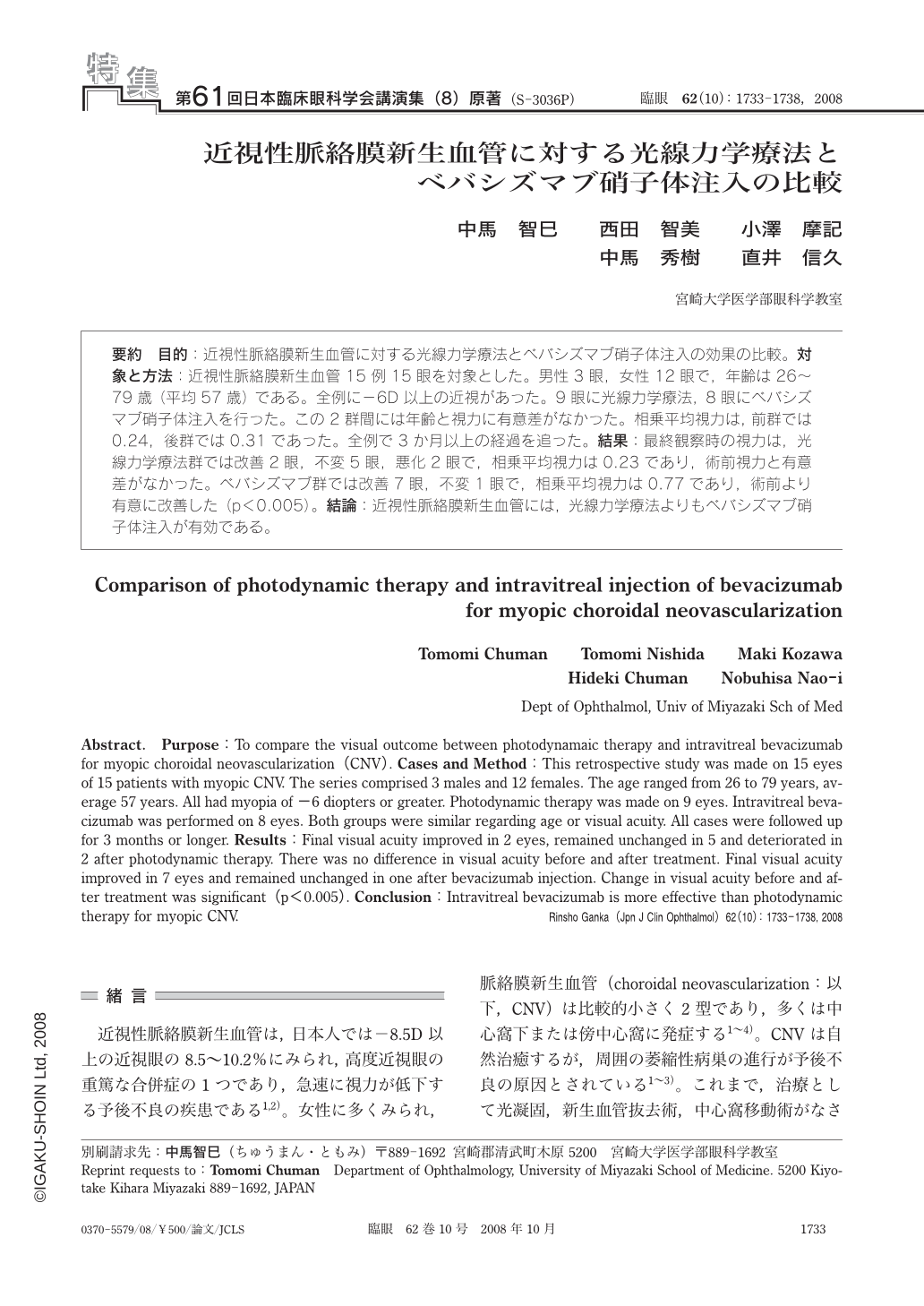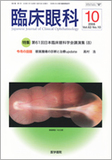Japanese
English
- 有料閲覧
- Abstract 文献概要
- 1ページ目 Look Inside
- 参考文献 Reference
要約 目的:近視性脈絡膜新生血管に対する光線力学療法とベバシズマブ硝子体注入の効果の比較。対象と方法:近視性脈絡膜新生血管15例15眼を対象とした。男性3眼,女性12眼で,年齢は26~79歳(平均57歳)である。全例に-6D以上の近視があった。9眼に光線力学療法,8眼にベバシズマブ硝子体注入を行った。この2群間には年齢と視力に有意差がなかった。相乗平均視力は,前群では0.24,後群では0.31であった。全例で3か月以上の経過を追った。結果:最終観察時の視力は,光線力学療法群では改善2眼,不変5眼,悪化2眼で,相乗平均視力は0.23であり,術前視力と有意差がなかった。ベバシズマブ群では改善7眼,不変1眼で,相乗平均視力は0.77であり,術前より有意に改善した(p<0.005)。結論:近視性脈絡膜新生血管には,光線力学療法よりもベバシズマブ硝子体注入が有効である。
Abstract. Purpose:To compare the visual outcome between photodynamaic therapy and intravitreal bevacizumab for myopic choroidal neovascularization(CNV). Cases and Method:This retrospective study was made on 15 eyes of 15 patients with myopic CNV. The series comprised 3 males and 12 females. The age ranged from 26 to 79 years,average 57 years. All had myopia of -6 diopters or greater. Photodynamic therapy was made on 9 eyes. Intravitreal bevacizumab was performed on 8 eyes. Both groups were similar regarding age or visual acuity. All cases were followed up for 3 months or longer. Results:Final visual acuity improved in 2 eyes,remained unchanged in 5 and deteriorated in 2 after photodynamic therapy. There was no difference in visual acuity before and after treatment. Final visual acuity improved in 7 eyes and remained unchanged in one after bevacizumab injection. Change in visual acuity before and after treatment was significant(p<0.005). Conclusion:Intravitreal bevacizumab is more effective than photodynamic therapy for myopic CNV.

Copyright © 2008, Igaku-Shoin Ltd. All rights reserved.


